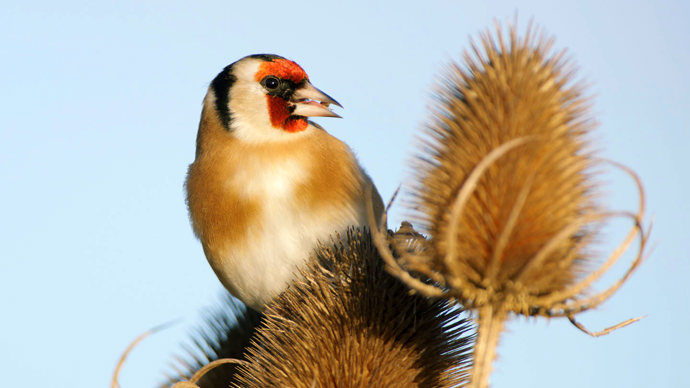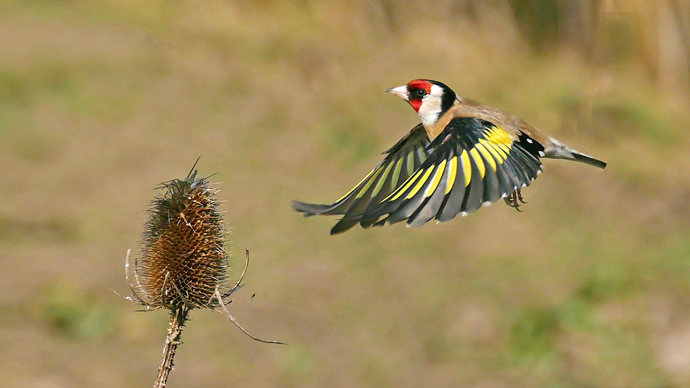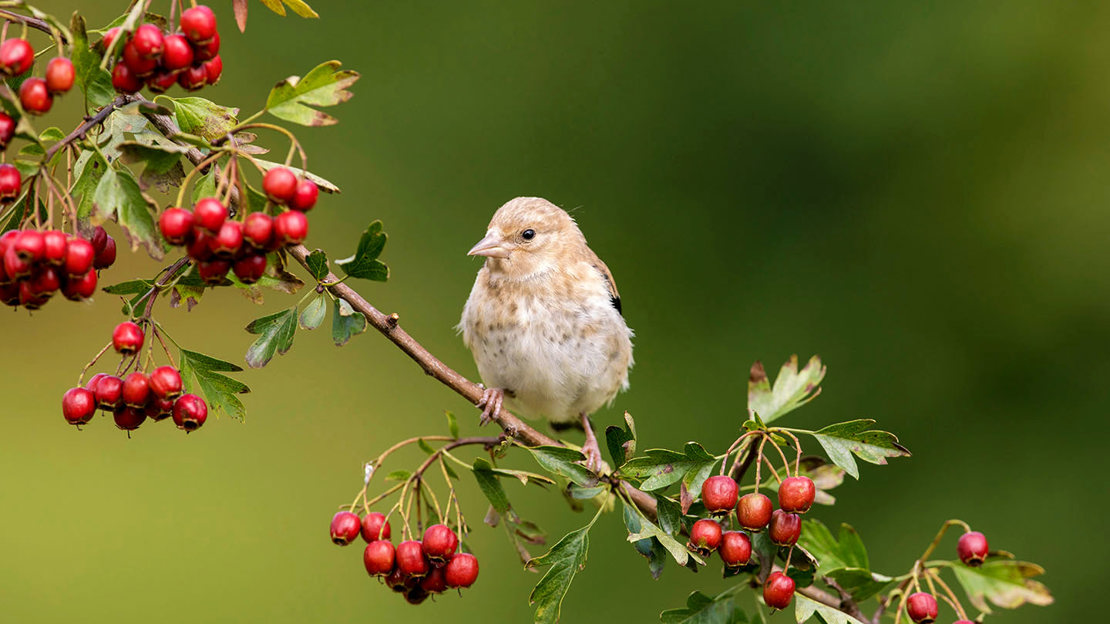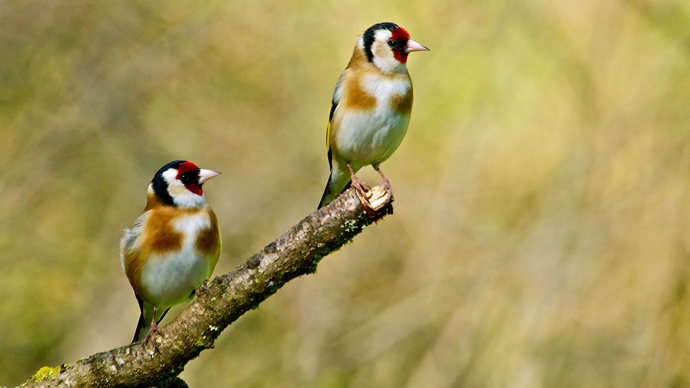Common name: goldfinch
Scientific name: Carduelis carduelis
Family: Fringillidae
Habitat: woodland, farmland, parks and gardens
Diet: seeds, invertebrates
Predators: sparrowhawks; chicks and eggs vulnerable to range of predators
Origin: native
Seed-eating specialists with a bright red face. Goldfinches are perfectly adapted to access food other birds can’t reach.
Common name: goldfinch
Scientific name: Carduelis carduelis
Family: Fringillidae
Habitat: woodland, farmland, parks and gardens
Diet: seeds, invertebrates
Predators: sparrowhawks; chicks and eggs vulnerable to range of predators
Origin: native
Adult goldfinches have a distinctive red face with a black cap and black around the eyes. The beak is short and powerful. Juveniles have a drabber, brown-grey face. The wings are dark with a striking yellow patch, and the goldfinch’s breast is a light brown-grey. It is a small species, being slightly smaller than a robin on average.

Credit: John Bridges / WTML
The goldfinch is a specialist seed feeder. Its fine beak is perfectly adapted to extracting seeds from plants such as thistles and teasels. Insects and invertebrates are fed to young in spring and summer.
Historically, goldfinches were commonly kept as caged song birds.
Goldfinch nests are normally built within thick cover several metres above ground. Typically, five eggs are laid in June and the chicks hatch after around two weeks. They will remain in the nest for another two weeks before fledging. Multiple broods may be raised in a good year.

Credit: Roger Wilmshurst / Alamy Stock Photo
Most goldfinches spend the year in the UK, but some will leave for the winter, travelling as far south as Spain.
Goldfinches live throughout the UK, with the exception of the most mountainous parts of Scotland. They can occupy almost any habitat with scattered trees and bushes and can be found in open woodland, farmland, parks and gardens. The species is most numerous in southern England.


Credit: Tony Cox / WTML
Goldfinches are easy to recognise and usually travel in flocks. Listen out for their melodic, twittering call. The species will often visit bird feeders and is particularly attracted to niger seeds.
Goldfinches sometimes appear in Christian imagery as a symbol of Christ’s passion.
The goldfinch population is doing well and is estimated to have more than doubled since the 1970s. Around 1.2 million pairs are thought to breed across the UK each year. However, the species remains vulnerable to the wider challenges facing wildlife such as loss of habitat and the clearance of woods and trees.